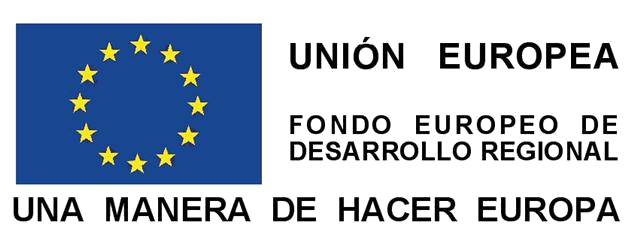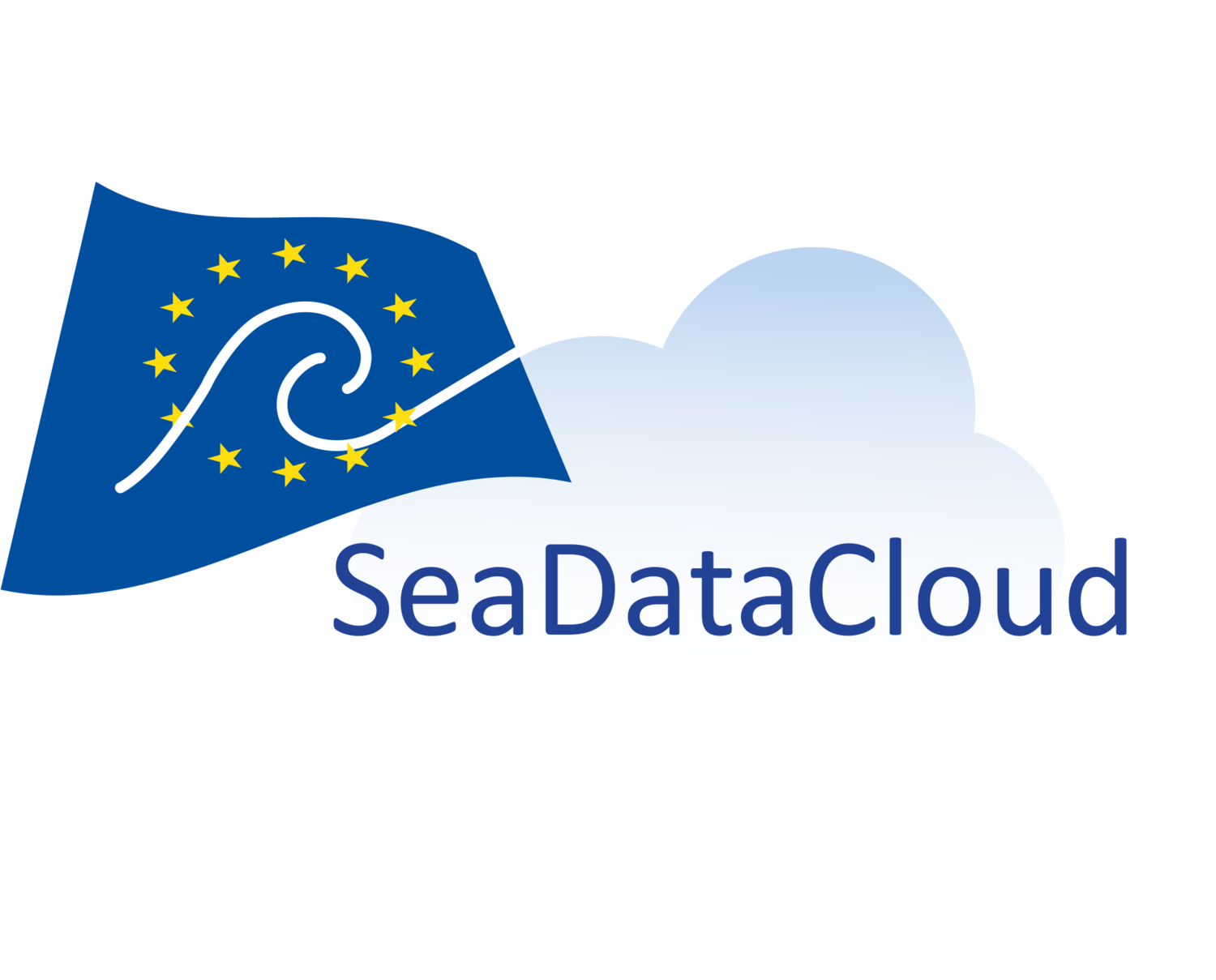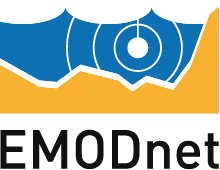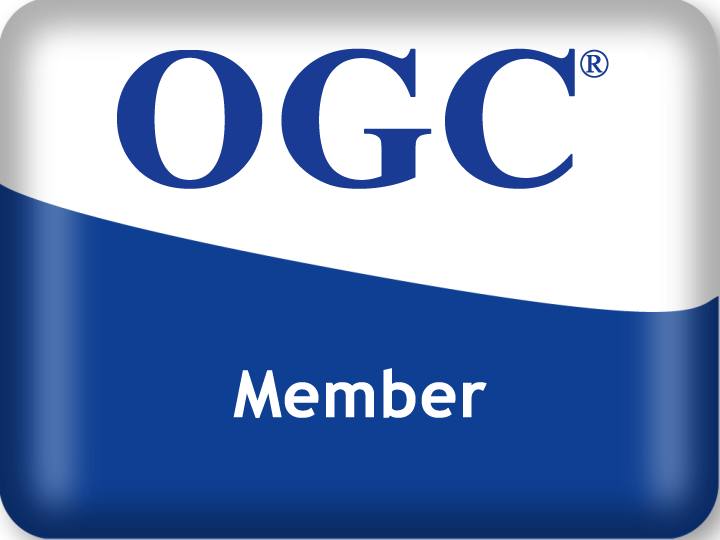Acoustic / geophysical instrumentation
-Kongsberg Maritime EA 600 single-beam hydrographic echosounder (includes pingerBenthos 2216 Deep Sea Pinger reception transducer)
Single-beam echosounder that detects the seabed
Can work with a transducer of 12 kHz (great depth, up to 4000 m) and another of 200 kHz (shallow, and high resolution).
At 12 kHz you can also contact an acoustic altimeter-beeper (pinger)
-Benthos 2216 Deep Sea Pinger
Self-contained mobile element that is installed in any equipment that wishes to monitor its distance to the bottom.
Emits signals of 12 kHz at a constant rate
It is capable of withstanding pressures of up to 12000 m of water column
-Kongsberg Maritime EM 122 1st x 2nd Deep-water multibeam echo sounder (includes continuous circuit of surface sound velocity and attitude GPS Sepath 300)

Echosounder designed to make bathymetric maps of sea beds from 20 m to depths greater than 11,000 m
Its transducers are located in the boat hull
The emission frequency of the echosounder is 13 kHz
The resolution is 1º x 2º (vertical resolution of 10 to 40 cm)
The coverage of the echosounder is 150º with a width of the insonate strip of up to 5,5 times the depth of the zone (up to 4000 m depth)
-Kongsberg Maritime EM 1002S Multibeam shallow-water echo sounder

It is a echosounders designed to perform high precision bathymetric surveys in shallow and medium waters (from 2 to 650 m),
With a sweeping width of up to 150º
Working frequency of 95 kHz
The beams have a resolution of 2º x 2º
The maximum coating is 1500 m or 7.5 times the depth in very shallow waters
The accuracy is up to 10 cm or 0.2% of the depth
-Kongsberg Defence & Aerospace TOPAS PS 18 Parametric subsoil profiler

The Parametric Sub-bottom Profiler is used to study the surface layers of seabed sediment and the detection of buried elements on the seafloor.
It is designed to be used at water depths from 10 meters to the total depth of the ocean. It uses a single transducer for the emission and reception. It emits two different frequencies (18 kHz - 1 to 6 kHz) that interact and generate another one of 14 kHz.
- Modes of emission: Ricker, CW, Chirp, Burst.
- Primary frequency: 18 kHz.
- Secondary frequency: 1 to 6 kHz.
- Maximum vertical resolution: 0.2 ms.
- Bandwidth: 4 - 6º
- Source level: 210 dB re 1μPa @ 1 meter at 5 kHz.
-Kongsberg Maritime EK 60 biological echo sounder (frequencies of 38 and 120 Khz)

It is used for biological studies, mainly for the estimation of biomass and the individual detection of targets, it can also make an automatic follow-up of the bottom as the EA 600.
It has two transducers 38 kHz (maximum range of 3000 m) and 120 kHz (maximum range of 900 m)
-Kongsberg Maritime Teledyne RD Instruments ADCP OceanSurveyor 75 kHz Current profiler for Doppler effect
Instrument that allows to characterize the marine currents from the different components of the speed in the layers of water.
The system can operate in long range mode (with cells of 8 or 16 m, ranges from 520 to 700 m and accuracies of 30 to 17 cm / s) or in high precision mode (with cells of 8 or 16 m, ranges from 310 to 410 m and accuracies from 12 to 9 cm / s)
The equipment is capable of emitting shots to detect the bottom (up to 950 m) with what allows to calculate the speeds in absolute terms (with an accuracy of at least 2 cm / s)
-SSU Acoustic Sync Unit (Synchronisation Sonar Unit )
It is used to synchronize the shooting time of the various acoustic equipment to prevent them from interfering with each other
-Lockheed Martin Sea-Air Systems Sippican MK21 Oceanographic data acquisition system
It is a system used to deploy disposable probes that are used to measure physical-chemical parameters of the ocean as a function of depth, such as temperature (XBT probes), sound velocity (XSV probes) and conductivity and salinity (XCTD probes).
-Surface sound velocity continuous circuit
Surface water tank that is being renewed by using a pump that circulates the water through the circuit, an Applied
Microsystems Ltd. Smart SV & Pressure sensor is installed inside the tank
-Lockheed Martin Naval Electronics and Surveillance Systems BGM-3 marine gravimeter

Gravity data acquisition system of the area where the ship sails (with a typical accuracy of at least 1 mGal)
-Kongsberg Seatex AS Seapath 300 GPS
GPS that integrates the information of position and orientation of the ship's bow (heading) and other additional attitude information of an inertial unit Kongsberg Seatex AS MRU 5
More information
-Vertical reference unit Kongsberg Seatex AS MRU 5 for attitude GPS Kongsberg Seatex AS Seapath 300
It is an IMU (Inertial Measurements Unit) that provides attitude values ( pitch,roll, or heave)
More information
-Pulse distribution multiplexer system 1 PPS Microsystems SR1131
Pulse distribution system PPS (Pulse Per Second) of the primary GPS of the Seapath 300 by the junction boxes distributed by the vessel
More information
-Scintrex CG-6 portable Gravimeter Portatil
Instrumentation for water column and atmosphere characterization and sampling
-CTD SBE911 plus,

CTD 9 Plus + SBE 11 plus V2 Cover Unit + SBE32 Carousel Water sampler for 24 bottles
Oceanographic instrument used to measure the conductivity, temperature and depht parameters in the water column, other sensors can also be added to measure other parameters such as turbidity, oxygen, chlorophyll among others. In addition, a system called a carousel where a series of Niskin bottles are installed can be installed. Sampling bottles close to predefined depths, are activated manually or through a computer, and water samples can be analyzed later to determine the biological parameters and chemicals.
The SeaBird CTD 9 Plus has the following sensors
- 2 x SBE3plus temperature sensors
- 2 x SBE4c conductivity sensor
- 2 x 5T pump
- Digiquartz pressure sensor
Auxiliary sensors
- Wetlabs AFL-NTU-RTD fluorometer and turbidimeter
- Seapoint SCF fluorometer
- Sea point STM turbidimeter
- SeaBird SBE43 oxygen sensor
- Wetlabs C-Star transmitter,
- Biospherical QSP-2300 PAR (Photosynthetically Active Radiation) sensor
- Benthos PSA-916 altimeter
- SeaBird CTD SBE911 plus

SeaBird CTD 9 Plus + SBE 11 plus V2 Cover Unit + SBE32 Carousel Water sampler for 24 bottles.
Oceanographic instrument used to measure the conductivity, temperature and depht parameters in the water column, other sensors can also be added to measure other parameters such as turbidity, oxygen, chlorophyll among others. In addition, a system called a carousel where a series of Niskin bottles are installed can be installed. Sampling bottles close to predefined depths, are activated manually or through a computer, and water samples can be analyzed later to determine the biological parameters and chemicals.
The SeaBird CTD 9 Plus has the following sensors
- SBE3plus temperature sensor
- SBE4C conductivity sensor
- SBE Digiquartz pressure sensor
- 5T pump
Auxiliary sensors
- WetLabs AFL-NTU-RTD Flurometer and turbidimeter
- SeaPoint SCF fluorometer
- SeaPoint STM turbidimeter,
- SeaBird SBE43 Oxygen sensor
- WetLabs C-Star transmitter
- Biospherical QSP-2300 PAR sensor (Photosynthetically Active Radiation)
- Benthos PSA-916 altimeter
-MOCNESS multinet

The MOCNESS system (Multiple Opening-Closing Nets / Environmental Sampling System) is a towled multinet device capable of working up to 6000 m that is based on a 2-D framework and 10 nets that are closed in a controlled manner to collect samples in containers at different depths, it is mainly used in studies of plankton.
The multinet includes different sensors
- Pressure sensor
- SBE3 Plus temperature sensor,
- SBE3 Plus conductivity sensor
- SBE43 oxygen sensor
- WetLabs fluorometer
- C-Star transmitter.
-Hydrobios Mammoth Multinet

Multinet for plankton studies of 1 m² of mouth and 9 nets, incorporates a V-Fin Depth depressor for horizontal fishing and a bucket holder to store samples, can make both vertical and horizontal catches
Pressure sensor
Engine to release networks on request,
Communication modem to operate the network in real time.
-2 x WorkHorse Monitor 300 Khz LADCP(Lowered acoustic doppler current profiler) Current profilers
Teledyne RD Instruments LADCP 300 kHz Doppler current profiler. It is an instrument that allows to characterize the marine currents from the different components of the speed in the layers of water, consists of two heads Workhorse ADCP (master and slave) located on the same vertical and oriented in the opposite direction
-Chelsea Technologies Group SeaSoar
Undulating towed oceanographic instrument for the characterization of the water column with undulate regimes of 0 to 500 m depth.
The structure incorporates a CTD SeaBird Sea-Bird 9 plus profiler + Cover unit Sea-Bird 11 plus V2 equipped with various sensors
- 2 x SBE4C conductivity sensors
- 2 x SBE3plus temperature sensors
- Digiquartz pressure sensor
Auxiliary sensors
- SeaPoint fluorometer
- SeaBird oxygen sensor
- LOPC Laser Optical Plankton Counter) and a Sea-Bird 11 plus cover unit; Deployable up to 500 m deep.
-Aanderaa Scanning Unit 3010 Automatic weather station
It includes sensors of atmospheric pressure, temperature, relative humidity, global radiation, speed, wind direction and ultraviolet radiation, the data are integrated with those of the thermosalynograph and the fluorometer
- PRR-800 Multispectral Radiometer (Biospherical)
Instrument used to measure the intensity of radiant solar energy in the column of water.
Technical characteristics
Irradiance and radiance sensors: 15 channels (305, 313, 320, 340, 380, 395, 412,443, 465, 490, 510, 555, 670, 694, 710 nm)
Additional elements:
- Temperature sensor (-5 to 35ºC)
- Ultraviolet photodetector (305,313 and 320 nm)
- PAR sensor
- Inclinometer (pitch & roll)
- Unit of cover
- Telemetry cable (200 m) with kevlar reinforcement
- Pressure sensor up to 300m
Laboratory Equipment
Equipment for continuous analysis:
-Marine water collected in continuous.
%20(5).jpg)
Continuous marine water collection system. The water is collected by a pump BKMKC.1011 (TECNUIM) with the Teflon core located about 4.5 meters deep. All laboratories are supplied by this system.The pump has a flow rate of 4m3/h
-10 AU Fluorometer (Turner Designs)
%20(3).jpg)
Instrument to quantify the amount of chlorophyll in the envioronment in real time. Continuous measurement
Technical characteristics
Detector: Photomultiplier; Red (185-870 nm)
Detection limits:
- Chlorophyll a: 0.025 μg
- L Rhodamine WT Dye: 0 - 250 ppb
- FluoresceinDye: 0 - 250 ppb
Measurement range:
- Chlorophyll a: 0 - 250 μg
- L Rhodamine WT Dye: 0 - 250 ppb
- FluoresceinDye: 0 - 250 ppb
Filters: Chlorophyll, Rhodamine and without filter.
Cuvette holder: Continuous flow
Light source: UV halogen lamp (chlorophyll)
-SBE21 thermosalinograph

An instrument that measures temperature and conductivity in real time.It is usually connected to a surface marine water circuit.
Equipment for the analysis of samples
-Guildline 8410-A Portasal Salilometer
.jpg)
Portable salinometer used to determine the salinity of samples accurately.
Technical characteristics
Sample volume: Minimum of 150 ml
Thermostatic bath: Range: 15 - 38 ºC
Stability: ± 0.001 ºC (difference with the ambient temperature of 2 ºC)
Accuracy: ± 0.003 psu (for 24 hours without re-standardization)
Resolution: ± 0.0003 psu (at 35 psu and 15 ºC)
Measuring range: 0.004 - 76 mS / cm 2 - 42 psu
-Fluorometer 10 AU (Turner Designs)
.png)
Instrument to quantify the amount of chlorophyll in an aqueous sample.
Technical characteristics
Detector: Photomultiplier; Red (185-870 nm)
Detection limits
- Chlorophyll a: 0.025 μg
- L Rhodamine WT Dye: 0 - 250 ppb
- FluoresceinDye: 0 - 250 ppb
Measurement range
- Chlorophyll a: 0 - 250 μg
- L Rhodamine WT Dye: 0 - 250 ppb
- FluoresceinDye: 0 - 250 ppb
Filters: Chlorophyll, Rhodamine and without filter.
Cuvette holder: 25 and 13mm
Light source: UV halogen lamp (chlorophyll)
-FACSCalibur Citometer Flow (Beckton Dickinson)
%20(3).jpg)
Analysis instrument used for the classification and counting of the cells of a sample in solution measuring the light scattering and fluorescence of the sample
Technical characteristics
Fluorescence sensitivity: 1,000 fluorescein molecules per particle
Types of working tubes: 12 mm x 75 mm
Filters: 3 photomultipliers (band pass of 530 nm, 585 nm and 650 nm) Allow to work with Fluorescein, Phycoerythrin,
Propidium Iodide and Acridine Orange among other fluorochromes.
Parameters: FL1, FL2, FL3 and FL4
Direct dispersion detector: 300 nm spectral response at 1100 nm
Laser
- Laser Ion-Argon (emission fixed at 488 nm)
- Red diode laser (emission fixed at 635 nm)
Fluorescence resolution: <3% of the full peak
Analysis: 8 cellular parameters
Software and hardware: Available (Macintosh)
Sample flow rates: high (60 ml / min), medium (35 ml / min) and low (12ml / min). The flow rates are modifiable.
-LS 55 Spectrofluorimeter(PerkinElmer)
%20(2).jpg)
Instrument used to measure the fluorescence spectra of a sample, thus identifying the presence and concentrations of certain molecules present in the analyzed sample.
Technical characteristics:
Radiation source: 20kW xenon lamp
Pulse duration: 8μs.
Sensitivity: 500: 1
Accuracy: ± 1.nm
Sweeping speed: 10-1500nm / min with increments of 1nm
Emission bandwidth: 2.5 - 15nm variable every 0.1nm
Excitation bandwidth: 2.5 - 20nm variable every 0.1nm
Software and PC: available without network access.
Reading range: 200-900nm
-Lambda 850 spectrophotometer (PerkinElmer)
Instrument of analysis that allows us to determine the concentration of a certain substance in aqueous samples from the light absorbed or transmitted by the sample after having been traversed by a beam of light.
Technical characteristics:
UV / Vis Resolution: ≤ 0.0 5nm
Range of wavelength: 175nm – 900nm
Bandwidth: 0.05 to 5 nm with variations of 0.01nm
Radiation sources: Tungsten - halogen lamp and Deuterium lamp
Reading: Absorbance, transmittance (%), reflectance (%) and energy
Precision (wavelength): ≤ 0.02 nm
Accuracy (wavelength): ± 0.08 nm
Stability: ≤ 0.0002 Abs / h
Amplitude of the baseline: ± 0.0008 Abs
Detector: R 6872 photomultiplier
-Automatic Titrator 808 (Metrohm)
.jpg)
Instrument used to analyze the concentration of a certain substance in a dilution.
Technical characteristics:
Polarization current: -122.5 to 122.5 μA
Resolution:
- pH: 0.001
- Voltage: 0.1 mV
- Temperature: (-150 to + 250ºC): 0.1ºC
- Current: 0.01 μA
Accuracy:
- pH: ± 0.003
- Voltage: ± 0.2 mV
- Temperature (-20 to + 150 ºC): ± 0.2 ºC
Work modes:
- Preselected endpoint
- End point of the reaction
- Karl Fisher
- Measurement of pH / voltage / temperature / concentration
- Archivable personal programming
Measuring ranges:
- pH: from 0.00 to 14.00
- Voltage: from -2000 to 2000 mV
- Temperature: from -150 to 250 ºC
- Current: from -200 to 200 mA
-Automatic Titrator 716 DMS Titrino (Metrohm)
.jpg)
Instrument used to analyze the concentration of a certain substance in a dilution.
Technical characteristics:
Polarization current: -127 to 127 mA
Accuracy:
- pH: ± 0.02 (typically 40 mV / K)
- Voltage: ± 2 mV
- Temperature (0 - 100 ºC): <0.2 ºC
Work modes:
- Preselected endpoint
- End point of the reaction
- Karl Fisher
- PH / voltage / temperature measurement
- Fileable personal programming
Measuring ranges:
- pH: 0.00 to 14.00
- Voltage: from -2000 to 2000 mV
- Temperature: from -150 to 450 ºC
- Current: from -200 to 200 Ma
-Metro 507 Portable Ph meter (Crison)
Portable equipment for pH measurement of liquid samples.
Technical characteristics
Portable equipment .
Power supply: 9V square battery
Calibration: 1 or 2 points
Measuring range:
- PH value: 0.00 to 14.00 (resolution of 0.01)
-315i Portable Oximeter (WTW)
Portable equipment for the measurement of dissolved oxygen in water samples.
Technical characteristics
Portable equipment .
Power supply: 4 AA batteries
Calibration: 1 or 2 points
Range of measurement 1: 0.00 to 19.99mg / l
Range of measurement 2: 0.00 to 90.0mg / l
-OXI 45 DL Portable Oximeter (Crison)
Portable equipment for the measurement of dissolved oxygen in water samples.
Technical characteristics
Portable equipment .
Power: 2 AA batteries (Autonomy of 350)
Calibration: from 1 point to 100% relative humidity.
Measuring range: 0.00 to 60.00mg / l
Measurement error: 0.5% of the average value
Reproducibility: 0.2% of the average value
-2 x Datalogger LI-1400 (LIQUOR) + PAR SPHERICAL Sensor (LIQUOR)
Instrument used to measure the intensity of active photosynthetic radiation.
Technical characteristics
Portable equipment .
Power: 4 AA batteries
Sensitivity: 3μA per 1000μmol / sm 2 in water.
Linearity: Maximum deviation of 1%
Response time: 10μs
Equipment for the treatment of samples
-Heidolph REAX Top agitator
%20(2).jpg)
It is a device that is used to shake samples
Technical characteristics
Mode of use: By pressure or fixed (1 tube)
Type of movement: Circular and vibratory
Vibration: 0-2400 vibrations / min
Orbit: 5mm
-LC2215 Analytical scales (Sartorius)
.jpg )
Instrument used for the measurement of small masses.
Technical characteristics
Units of weight: g, Kg, ct, lb, oz, ozt, mg (among others)
Calibration: Automatic
Tare: Normal and double Weighing
range: 0.001 - 1200 g
Accuracy: ± 0.001 g
Operation on board: Not available (only for use on land)
Air currents protector: Available
-S-125- 3 Marine scales (Pols)
Instrument used for mass measurement.
Technical characteristics
Tare: Fixed or manual
Measuring range: 1g - 80 Kg
Accuracy: 0.1 - 50 g (from 200g to 80 Kg of weighing)
Operation on board: Available
-2 x A-3S Suction pump (Eyela)
%20(2).jpg)
Suction pump generally used for filtration
Technical characteristics
Maximum suction speed: 16-19L / min
Tank material: Polypropylene
Tank volume: 10L
Outlets of the tank: 2 exit points of 9mm diameter
-4 x WP6122050 Vacuum Pump (Millipore)
%20(3).jpg)
Vacuum pump with head resistant to the use of corrosive chemicals
Technical characteristics
Empty: 813 mbar
Maximum pressure: 2.41bar (35psi) intermittent, 1.37bar (20psi) continuous.
Maximum flow: 37 l / min
Connections: 1/4 "tube
-2 x Oceanrunner OR2500 impulsive pumps (Aquamedic)
Pumps used to recirculate the water in the incubation assembly.
Technical characteristics
Force: 2.6 m in height.
Flow: 2500L / h
-4 x Universal 1200 impulsive pumps (Eheim)
Pumps used to recirculate the water in the incubation assembly.
Technical characteristics
Force: 2.0 m in height.
Flow rate: 1200L / h
-Multi 4000 impulsive pumps(Sicce)
Pumps used to recirculate the water in the incubation assembly.
Technical characteristics
Force: 3.1 m in height.
Flow rate: 4000L / h
-3 x 2000 Titans Coolers (Aquamedic)
%20(2).jpg)
Coolers for thermoregulation large incubations on deck.
Technical characteristics
Flow rate: minimum 2000 liters / h., Maximum 4000 liters / h.
Temperature accuracy: 0.1 o C.
Temperature adjustment: 1ºC
Cooling capacity: -10ºC in aquariums of 1500L and -5ºC in aquariums of 2500L
-AH100 Laminar flow cabin(Telstar)

Cabin used to protect biological samples and used products from possible contaminations.
Technical characteristics
Filter: ASHRAE 85% / HEPA / ULPA H14
Internal dimensions: length 1200 mm x width 600 mm x depth 760 mm.
Air speed regulator.
Timer for UV.
UV light to sterilize the preparations.
-2 x NST-1200 extractor hood (Burdinola)
%20(3).jpg)
Showcase to handle toxic products and protect the worker from polluting gases
Technical characteristics:
Evacuated flow (air): 1200 m3 / h
Door: Vertical opening / Two lateral opening fronts
Usable area: 75x75 cm2
BURDINOLA RB 1200 gas extraction cabinet
%20(2).jpg)
Showcase to manipulate toxic products and protect the worker from polluting gases. Installed in a radioactive laboratory.
Technical characteristics:
- Interior dimensions: 1140/690/860 mm (length / depth / height).
- External measurements: 1200/900/2360 mm (length / depth / height).
- 4 electrical bases and circuit breaker and magnetothermal switch.
-2 pouring sinks of 10x10 cm
-UFE 400 culture stove (Memmert)
%20(4).jpg)
Stove for the incubation of bacteriological cultures.
Technical characteristics
Temperature range: +30 to + 250ºC
Capacity: 53L
Size: 400 x 400 x 330 mm.
Digital display with variations allowing variations of ± 1ºC
-Drying stove ULM 400 (Memmert)
.jpg)
Stove for drying instruments and wet desiccants.
Technical characteristics:
Temperature range: +30 to + 220ºC
Capacity: 53L
Size: 400 x 400 x 330 mm.
Digital display with variations allowing variations of ± 1ºC
-Mufla L3 / 11 / C6 (Nabertherm)
%20(2).jpg)
High temperature laboratory heat oven.
Technical characteristics
Maximum temperature: 1100 ºC
Internal volume: 3L
Time at maximum temperature: 60min
Overture: Lift door.
- 2-16 refrigerated PKCentrifuge (Sigma)

Centrifuge that allows centrifugation of samples at a controlled temperature.
Technical characteristics
Temperature range: -10ºC to 40ºC
Speed range (rpm): 100 to 15300 (adjustable with increases of 1rpm)
R.c.f.:21 913 g
Capacity: 4 tubes of 120 ml or 16 tubes of 15ml or 4 tubes Falcon of 50 ml
Memory for 50 programs.
Oscillating rotor
-5417R refrigerated Microcentrifuge (Eppendorf) Centrifuge with rotor for 2ml tubes (Eppendorf).
.jpg)
Technical characteristics
Temperature range: from 0 to 40 ºC
Time range: 30 sec. - 30 min.
(Continuous rotation option)
Rotor: 24 x 2 ml
Speed range: 200 - 13200 rpm (16100 RCF)
Acceleration / Braking: < 13 s / < 11s
-5415R refrigerated Microcentrifuge(Eppendorf)
Centrifuge with rotor for 2ml tubes (Eppendorf).
Technical characteristics
Temperature range: from 0 to 40 ºC
Time range: 30 sec. - 30 min.
(Continuous rotation option)
Rotor: Angular 24 x 2 / 1.5 ml (eppendorf tubes)
Speed range: 800 - 13200 rpm (16100 RCF) with 200 rpm increments
Acceleration time: 13s
Braking time: 11s
-BR4i Refrigerated microcentrifuge (Jouan) .Centrifuge with rotor for Eppendorf tubes.
%20(2).jpg)
Exclusive use for radiological analysis
Technical characteristics
Temperature range: -9 to 40 ºC
Time range: 30 sec. - 99 min. (Continuous rotation option)
Rotor: 24 x 1.5 ml
Speed range: 500 - 14000 rpm (18407 RCF)
Acceleration / Braking: selectable (5 types)
-Autotester-E 75 DRY Autoclave (JP Selecta)
.jpg)
Instrument used to sterilize both solids and liquids.
Technical characteristics
Operation: 9 automatic programs (liquid, solid, solid + drying) (signal
end-of-cycle acoustics) and 1 free program.
Working pressure: 1 - 2 bar
Timer: 1 - 99 minutes
Temperature range: 105 - 134 ºC
Capacity: 75liters
-ST2 / 3 PREM TOP + FIT thermostatic cabin (POL-EKO- APARTMENT SP.J.)
Laboratory apparatus used to grow bacteriological or cellular cultures. It allows to maintain the temperature and humidity in the conditions that interest us.
Technical characteristics
Two work environments
Volume: 195L (x2)
Lighting: Adjustable power
Temperature range: 3ºC to 60ºC
-2 x Nestlab RTE-17 Digital Plus Thermostatic bath (Thermoscientific)

Bath used to thermoregulate samples. We can connect a second container hermetic (to keep it also at controlled temperature) since it has a pump recirculation.
Technical characteristics
Tank capacity: 17 liters
Range T: -22ºC to 150ºC with variations of 0.1o C
Stability: ± 0.01ºC
Tank size (WxLXD): 24.2x20.6x22.9 cm
-2 x Nestlab RTE-17 Digital One Thermostatic bath (Thermoscientific)
Bath used to thermoregulate samples. We can connect a second container hermetic (to keep it also at controlled temperature) since it has a pump recirculation.
Technical characteristics
Tank capacity: 17 liters
Range T: -22ºC to 150ºC with variations of 0.1o C
Stability: ± 0.01ºC
Tank size (WxLXD): 24.2x20.6x22.9 cm
-F33-EH Thermostatic bath (Julabo)

Bath used to thermoregulate samples. We can connect a second container hermetic (to keep it also at controlled temperature)
since it has a pump recirculation.
Technical characteristics:
Tank capacity: 16 liters
Range T: -30ºC to 150ºC with variations of 0.1o C
Stability: ± 0.01ºC
-MB-5A Heater bath (Julabo)
Bath to be able to thermoregulate samples at high temperatures
Technical characteristics
Temperature range: 22 to 60ºC
Volume: 3.5 to 5 L
Dimensions container: 12x24x15 cm
-2 x wb-22 Heater bath(Memmert)
.jpg)
Bath to be able to thermoregulate samples at high temperatures
Technical characteristics
Temperature range: from +10 to + 95ºC
Volume: 22L
Dimensions container: 350 x 290 x 220 mm
- 8890E-MT Ultrasonic bath (Cole-Parmer)
.jpg)
Bath to ultraninicate the samples. Used to undo cell agglutination or other substances.
Technical characteristics
Bath dimensions: 7 x 14 x 13.5 cm (internal volume)
Timer: 0-60 minutes
-08890-06 Ultrasonic bath (Cole-Parmer)
%20(2).jpg)
Bath to ultraninicate the samples. Used to undo cell agglutination or other substances.
Technical characteristics
Bath dimensions: 7 x 14 x 13.5 cm (internal volume)
Timer: 0-60 minutes
-Us2.8 ultrasonic bath (Fungilab)
Bathroom to ultrasonicate the samples. It can also be used to undo clusters cellular or other substances.
Technical characteristics
Bath dimensions: 10 x 13.7 x 24 cm (internal volume)
Capacity: 2.8L
Timer: 0-15 minutes
Ultrasound generator power: 100W or 200 W.
Heating: Temperature adjustable from the ambient temperature to 90ºC
Equipment for the preservation of samples
-2 x 1390-10-V Ultra Freezer (Thermoscientific Revco)
Instrument for conservation samples at low temperature
Technical characteristics
Temperature range: - 50ºC to - 86ºC
Capacity: 359.6L
Internal Dimensions: 711 x 1080 x 470 mm
- 80 ULT -1090- 3-V31 Ultra freezer - (Revco)
Instrument for the conservation of samples at low temperature.
Technical characteristics
Temperature range: - 20ºC to - 85ºC
Capacity: 292L
Internal Dimensions: 67.3 x 48.2 x 89.8 cm
-Aspes Ideal 4 degrees fridge
%20(2).jpg)
Instrument for the conservation of samples at 4 ºC.
Technical characteristics
-Measures: 86/55/55 cm
-Temperature: 4 ºC
-Equipped with a small freezer inside the refrigerator
-Fridge freezer -20 o C CFJ1330 (Fagor)
%20(2).jpg)
Instrument for the preservation of samples at low temperature
Technical characteristics
Temperature range: from 0 to -24 oC
Volume: 280 liters
-2 x34HC liquid nitrogen container (Taylor-Wharton)
.jpg)
Container to keep nitrogen in the liquid state for as long as possible.
Technical characteristics
Volume of liquid N2: 30 liters (approx.)
Fill frequency: approximately 1 month (depending on use and environmental conditions)
Baskets (samples): Taylor-Wharton
Optical microscopy equipment:
-Eclipse 50i Direct epifluorescence microscope (Nikon)
%20(4).jpg)
Equipment for the visualization of microscopic samples. Thanks to the epifluorescence we allows to study samples treated with stains. It has an adapter to attach the digital camera DI-Fi1 (Nikon)
Technical characteristics
Objectives: 5 (x4 / x10 / x20 / x40 / x100)
Eyepieces: x10
Lighting: Mercury lamp and halogen lamp
Filters: DAPI + TRITC + B-2A
Photographic camera
- IX51 S8F-3 epifluorescence Inverted microscope (Olympus).
.jpg)
Equipment for visualization of microscopic samples with the light source located by below the sample. Thanks to epifluorescence it allows us to study samples treated with stains It has an adapter to attach the digital camera DI-Fi1 (Nikon)
Technical characteristics
Objectives: 5 (x4 / x10 / x20 / x40 / x100)
Eyepieces: x10
Lighting: Mercury lamp and halogen lamp.
Filters: DAPI + TRITC + B-2A
- DS-Fi1 Camera (Nikon)
%20(4).jpg)
Digital camera to attach to the Eclipse 50i direct microscope (Nikon), under the microscope inverted IX51 (Olympus) and the magnifying glass SMZ1500 (Nikon) to capture images of samples
Technical characteristics
2/3 inches
Color photographs
Megapixel: 5.24
-SMZ1500 Magnifying glass (Nikon)
.jpg)
Magnifying glass for displaying small samples.
Technical characteristics:
Lighting: From the base of the sample with adjustable intensity and top lighting by middle of a flexo
Increases: 0.75 - 11.25
Eyepieces: 10x
It has an adapter to connect the digital camera DI-Fi1 (Nikon).
-SZ30 binocular lens (Olympus)
.jpg)
Magnifying glass for displaying small samples.
Technical characteristics
Base: light / dark field
Eyepieces: x10
Increases: 0.9 - 4
Lighting: Lateral flexes
-SZ30 binocular magnifying glass (Olympus)
Magnifying glass for displaying small samples.
Technical characteristics
Base: Illuminated
Eyepieces: x10
Increases: 0.9 – 4
Water purification equipment
-2 x Elix-10 Millipore Distillators
%20(3).jpg)
Distilled water generator. All laboratories have a distilled water outlet in the sinks.
Technical characteristics
Production of deionized water
Production capacity: 10 Liters / hour
Resistivity of the water produced:> 15 MΩ / cm
COT <30ppb
Capacity of storage tanks: 130 liters.
-Academic A10 Mili-Q Distillator(Millipore)
%20(3).jpg)
Milli-Q ultrapure water generator located in the main laboratory.
Technical characteristics
Production capacity: It dispenses water for 30 minutes and we can prefix the volume of water we need (minimum of 0.01l)
Resistivity of the water produced:> 18.2 MΩ / cm
Conductivity of the water produced: 1-0.055 μS / cm
TOC: 1-999 ppb
Final filter 0.22μm
On-board services
-3 Trimble Acutime 2000 time GPS
Time GPSs that serve as input to the NTP time servers
-Diverse GPSs position and time accessories
Trimble Acutime II, Trimble Acutime 2000, Ashtech G-8, etc.
-Seawater and freshwater distribution system
The scientific staff has seawater that is collected continuously by a pump in the keel of the vessel at about 4.5 m depth, the water is distributed to laboratories
-System of distribution of distilled water
There are distilled water outlets in laboratories that can be used for analysis or processing of samples
-Distilled water distribution System
There are distilled water outlets in laboratories that can be used for analysis or processing of samples
-Dozens of acquisition computers
They are distributed throughout the ship, depending on the acquisition software running various operating systems (Windows, Linux, MACOS, Unix, etc.).
-Various user computers
Most work under Windows XP operating system
-Ethernet network of the vessel
Computer communication (structured cabling and wireless network) between the different rooms of the ship and to the outside (management of routers, switches, hubs)
-Vsat connection
Provide Internet with planetary coverage with 512 kb/s(MIR) of bandwidth guaranteed. It consists of the following elements: C band antenna, ACU and modem.
-Email and open Internet connection
Email service with automatic connections along the day, some of the terminals have Internet access (ISDN data service 128 kb / s bandwidth)
-Integration and acquisition system of oceanographic data (SADO))
Distribution throughout the ship of integrated navigation data (in position and time) with other parameters
Uninterruptible power systems
To protect the equipment more sensitive to current changes, on-line SAI are used
-Systems of printing and digitalization of documents
The ship has several plotters, printers, scanners and multifunction devices
-Software of processing, visualization and data acquisition, other specific applications









